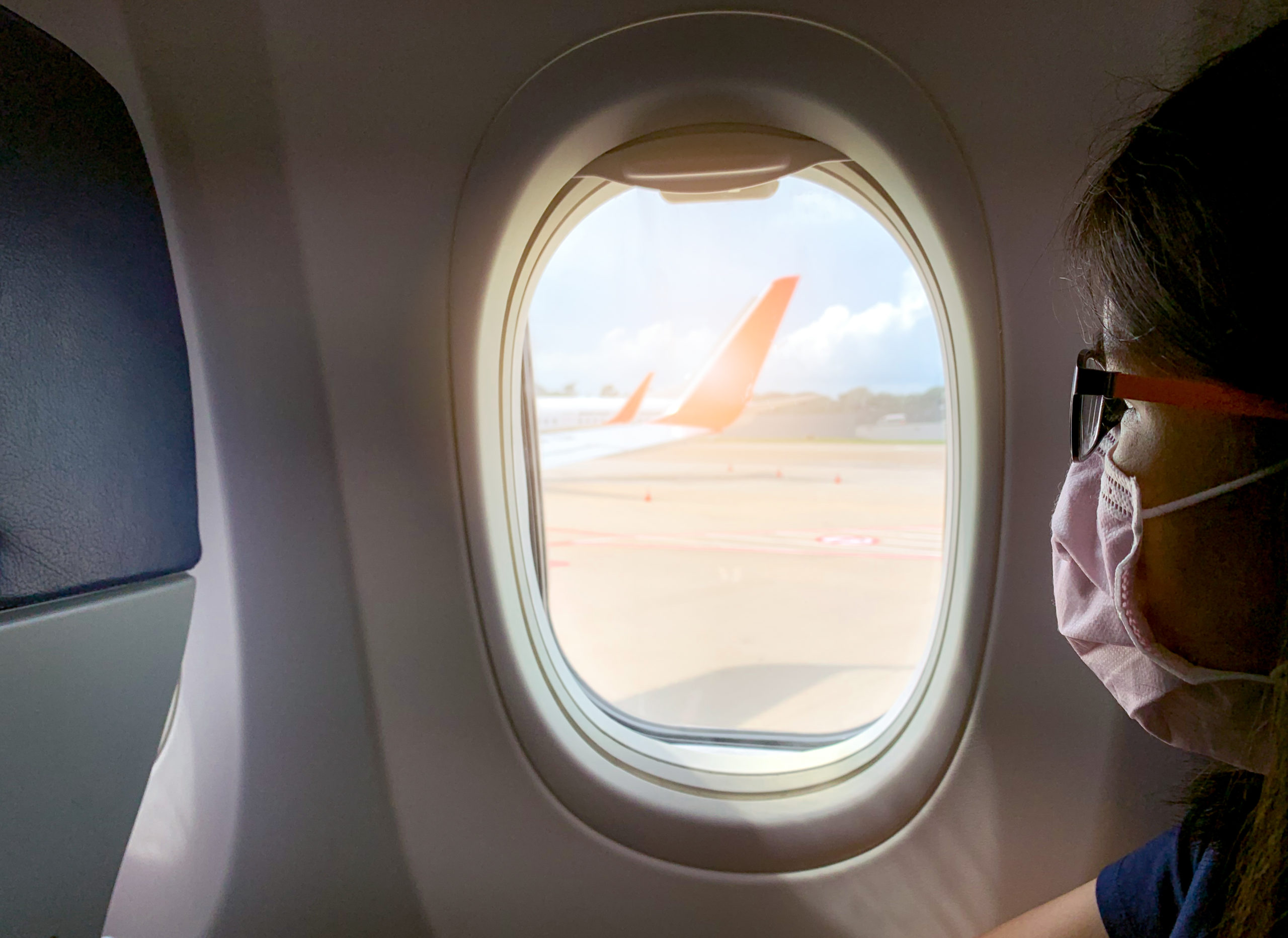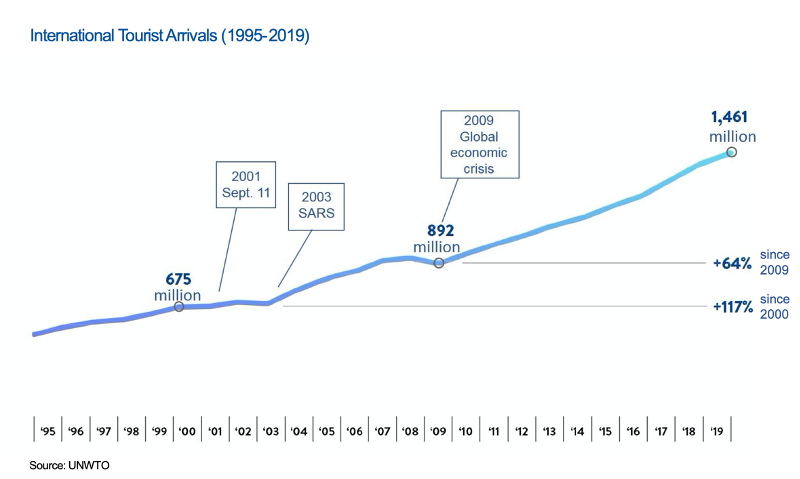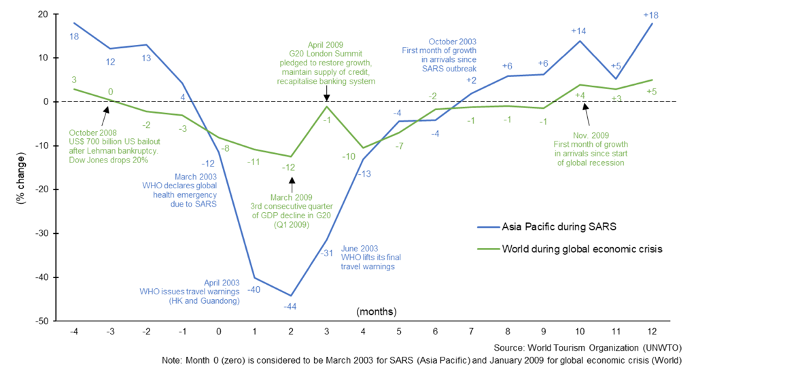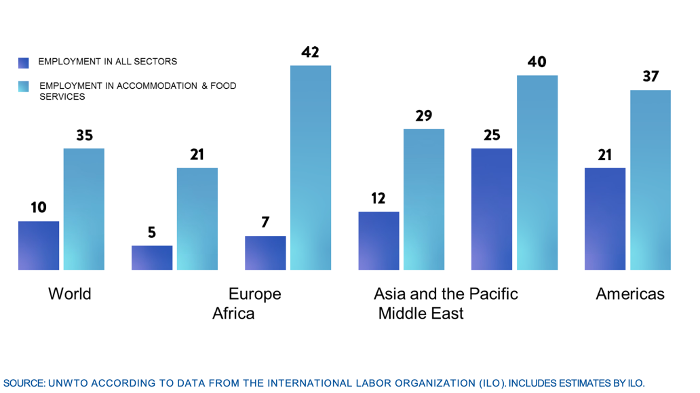
How Tourism Leaders Should Respond to the Impacts of COVID-19
As we all do our part to help flatten the curve in the weeks and months ahead, the tourism and hospitality industries will face unprecedented challenges. It is now very clear that the only way to stop the spread of this virus is for us to stay at home and practice physical distancing. This means taking a pause from restaurants, hotels, events, business meetings, and air travel. The result of these guidelines is an abrupt stop to the engines of an industry that—at its very core—is intended to bring people together. These restrictions, while necessary, will be devastating to over 10% of the world’s economy and the 1 in 11 jobs tied to travel and tourism.
Many of Solimar’s clients include Destination Management Organizations (DMOs), Ministries of Tourism, and Tourism Boards that are struggling to understand what this global impact will have on their economies and what priority actions are needed to deal with this crisis. The main questions we are hearing include:
- What should we be doing right now during this time of crisis?
- Should we stop marketing our destinations?
- Do we need to throw out the long-term tourism plan and create a new one?
- When will things return to normal and what impact will this have on tax revenue and the local economy?
Since we know these questions are top of mind for any tourism organization, we wanted to do the best we can to answer these for our clients and the rest of the industry.
- What should DMOs, Ministries of Tourism, and Tourism Boards do right now during this time of crisis?
The one thing this virus has demonstrated is that when we find ourselves in crisis, we need leadership. We need leaders who can clearly communicate facts, provide steady guidance, and help remind us that we will get through this together. Elected leaders from around the world are doing their best to provide this leadership to citizens. Even though we all hear these national guidelines, the tourism industry needs leadership too. Those that lead tourism organizations are asked daily to lead your staff, but in moments like this we need you to lead your industry as well. Your tourism partners need a place to get reliable information about tourism and understand the resources and support available to them. This doesn’t mean you have to communicate only the support your organization can provide; you can play an important role to help industry partners make sense of new stay at home guidelines being imposed, or details about the latest bill or stimulus package that has been approved. Most importantly, as a tourism leader you need to remind those in the industry that they are not alone and the industry will recover together.
Tourism leadership also means advocating for your industry. Often, the tourism leader is the only one that can pick up the phone and call those elected officials that are making national and local decisions about how to deal with this crisis. Your leadership is needed to remind government about the impact the tourism industry is facing and the support that is needed. Remember, leadership is not only during this immediate crisis, but this is needed over the next year as the industry tries to recover. We are convinced that it will be the destinations with the strongest tourism leaders that will be the ones that come out of this crisis the fastest and with a stronger tourism industry.
For an example of tourism leadership, listen to this webinar from BRAND USA, CEO Chris Thompson and Carroll Rheem VP Research & Analytics sharing insights to industry partners in light of this virus.
Here are some other great examples of tourism organizations making toolkits and information available to their industry partners:
- Travel Oregon
- Sedona Chamber of Commerce
- US Travel Association
- Visit Britain
- Tourism Australia
- Tourism New Zealand
Remember, as a tourism leader it’s important to speak to all destination stakeholders during this time of crisis, not just your industry partners. See this wonderful example from Jennifer Wesselhoff, President/CEO of Sedona Chamber of Commerce and Tourism Bureau in her open letter to all Sedonans where she not only reinforces important safety messages but also how residents can support local businesses during this crisis and most importantly offering some messages of hope and perseverance closing the letter with “Keep up the good work. Let’s stand together, help each other and stay safe and positive. #SedonaStrong”. This is what tourism leadership looks like.
- Should we stop marketing our destinations?
Yes and no. The simple answer during this time where the entire world is being asked to stay at home, is no, you should not be trying to convince people to visit your destination. But that doesn’t mean you stop marketing. The entire world is stuck at home right now dreaming of when things return to normal and they can get as far away from their home quarantine as possible. Their daily social media feeds are full of negative stories about this virus, why not brighten their day with an inspirational message while showcasing your destination?
See this example from the Namibia Tourism Board that executed this idea brilliantly. They reinforced the message that we must stay at home but reminded us that their beautiful destination that offers endless horizons waiting for you when you are ready and allowed to get off your couch.
and here is another wonderful example from Visit Portugal:
Another important marketing activity that you should be doing now is marketing planning. This is the perfect time for you to inspire your marketing team and agency partners to help refresh your creative assets and develop a campaign that is ready to go the minute social distancing orders and travel restrictions are lifted. It is highly recommended to focus your first campaign on your domestic market and residents. As soon as people are given the opportunity they will want to get out of their houses and re-connect with family and friends. Start working now on your campaigns that will encourage your local market to get out and spend money with your hospitality partners. Once you have the domestic campaign ready to go, reach out to your international tour operator and airline partners and start discussing now how you can invest marketing resources together to get those airplane seats full again.
3. Do we need to throw out the long-term tourism plan and create a new one?
No! You should adapt your plan, but do not start over. We believe strongly that all destinations need a long-term tourism plan that guides the industry towards a common vision. But a tourism plan should never be seen as a static document. A tourism plan is a strategic framework that gives direction to the public and private sector on how to work collaboratively to achieve a common vision. For those that have a tourism plan, has your vision for where you want to see your destination in 10 years changed because of this virus? Probably not. Look back at your strategic objectives that frame your plan, have these changed because of the virus? Probably not. What has changed is the need to re-prioritize actions and specific activities.
What your plan will also need is a new high-level objective to show your industry partners that you are responding to this crisis. This might be called “Assist the industry respond and recover from the COVID-19 crisis.”
Priority actions might include
- Make low-cost loans available to help tourism businesses during this crisis
- Create/strengthen a government safety net for tourism workforce that loses their job because of forced layoffs
- Provide online skills development opportunities that tourism businesses and workforce can access during social distancing period
- Provide industry support and training in disinfecting and deep cleaning, and develop a “COVID-Safe” certification program to incentivize industry participation
- Develop a short-term marketing plan focused on locals to launch as soon as social distancing ends
- Develop a cooperative marketing grant fund to incentivize and support international tour operators and low-cost airlines to start bringing visitors to your destination
- Develop a crisis response emergency plan based on lessons learned from COVID-19 to have ready for future crisis
But if your new tourism plan is just focused on immediate actions that are needed in this time of crisis, you will never be able to achieve that collective vision you developed for your long-term plan and run the risk of just “taking action” without a clear direction or strategy to measure the success of those actions.
4. When will things return to normal and what impact will this have on tax revenue and the local economy?
This is the question everyone wants answered, but the reality is no one can say for sure.
The UN World Tourism Organization (UNWTO) is predicting a fall in international arrivals by 20-30% in 2020 and this would translate into decline in international tourism receipts (exports) of between US$300-450 billion.
But the UNWTO also reminds us that tourism has a history of continued growth and resilience as seen in the below graph that shows the impacts and recoveries from other global events in recent history.

And as we learned from the 2003 SARS Virus and the 2009 global economic crisis, in both cases the industry re-bounded quickly as seen in the below graphs.

And just as important, remember how employment rebounded across all sectors by 11% after the global economic crisis between 2010 and 2018 compared to 35% employment growth in in accommodation and food services.

This reminds us again that when life returns to normal, our society returns to travel and spending money in the hospitality sector. This is the benefit of travel, we know the industry enjoys “pent up demand”. Everyone who had to cancel their spring break trips or summer trips will be the first to book new trips as soon as they are able. Afterall there’s a scientific reason our suitcase is always half packed.
At Solimar International, we have experience helping many of our destination clients navigate these times of uncertainty. We were there after the earthquakes in Haiti and Nepal and the terrorist attacks in Egypt, Tunisia, and Sri Lanka. We are here with you now and ready to support your recovery efforts. Just remember you are not in this alone and our industry needs your leadership to help us return to the days where sustainable tourism is driving economic growth.
Contact us today to let us help you develop your tourism crisis recovery plan.
